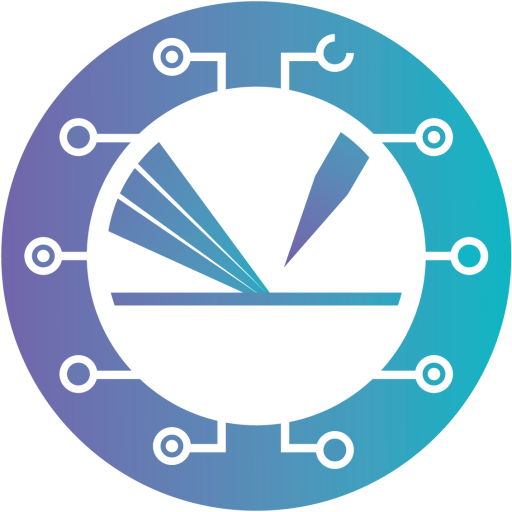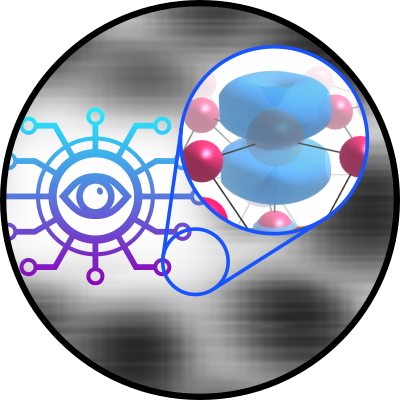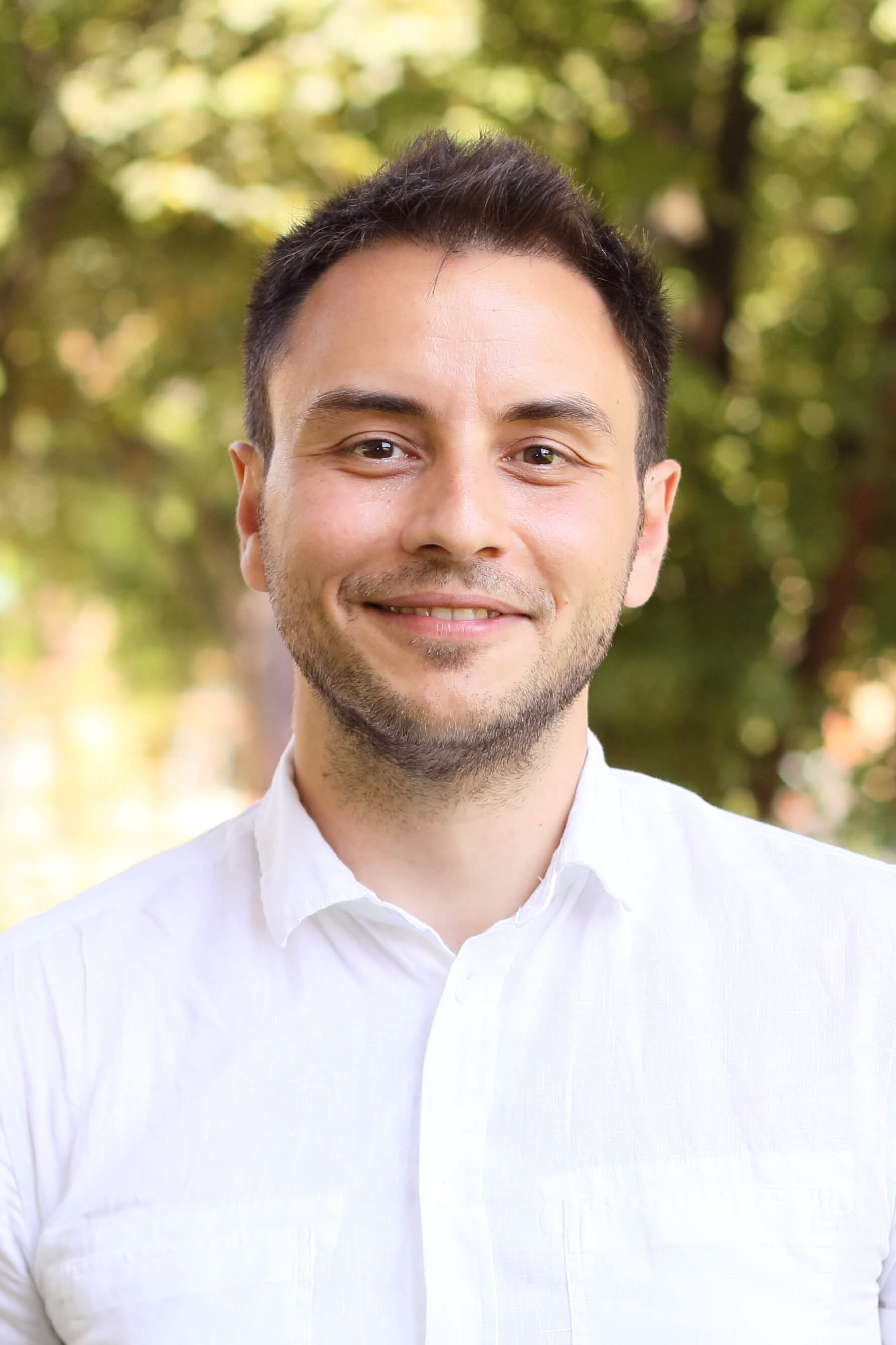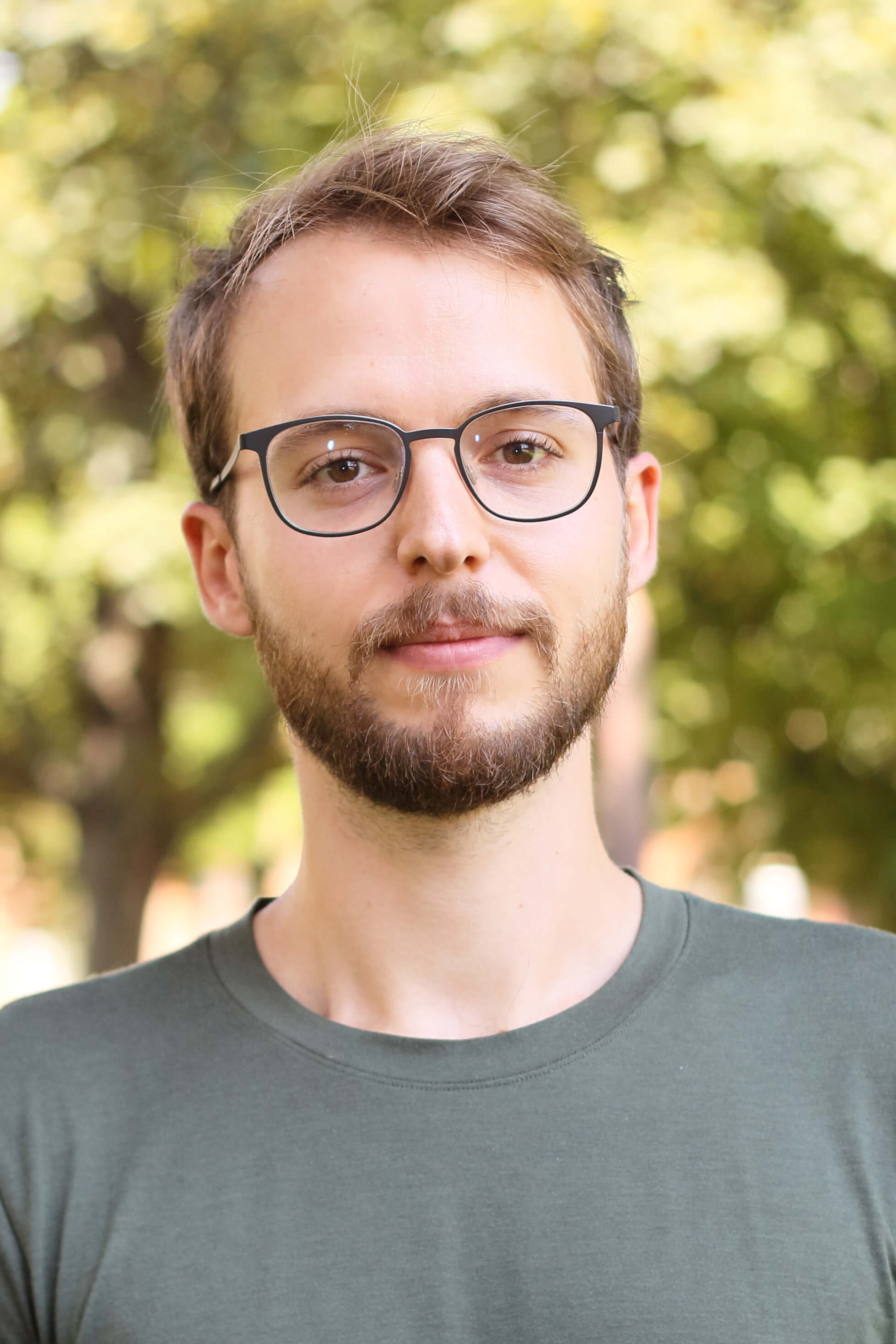Polaron pattern recognition
in correlated oxide surfaces
Subproject P07
The formation of polarons by charge trapping is pervasive in transition metal oxides. Polarons have been widely studied in binary compounds but comparatively much less so in perovskites.
In P07, we aim to combine advanced first-principles approaches with computer-vision and machine-learning techniques to accelerate and automatize the study of polarons and novel polaron effects in perovskites.
The project has three main pillars: (i) artificial intelligence-aided analysis of experimental ncAFM/STM results (from P02 Diebold, P04 Parkinson) to extract lattice symmetry, surface structure, and chemical composition; (ii) calculation of polaronic configurational energies at different concentrations and temperature using NN; and (iii) identification of unusual types of polarons and polaron-defect complexes in doped perovskites such as spin-, ferroelectric-, Jahn-Teller-, small polarons, and bipolarons.
In the long-term, we plan to establish a fully automatic diagnosis of ncAFM/STM (symmetry, defects, domains) and LEED (diffraction, surface reconstruction) and the construction of a combined experiment & theory database. The research will benefit from two external collaborators and synergy with several experimental (P02, P04) and computational (P03 Kresse, P09 Madsen) TACO partners.
Expertise
Theoretical and computational modeling of quantum materials, in particular transition metal oxides in bulk phases and surfaces, to predict and interpret novel physical effects and states of matter arising from fundamental quantum interactions: electron-electron correlation, electron-phonon coupling, spin-spin exchange, spin-orbit coupling, to name the most relevant ones. The theoretical research is conducted in strong synergy and cooperation with experimental groups.
Methods:
- Density functional theory, hybrid functionals, GW, BSE
- First principles molecular dynamics
- Effective Hamiltonian
- Diagrammatic quantum Monte Carlo
- Dynamical mean-field theory
- Machine learning and computer vision
Applications:
- Polarons: formation, dynamics, polaron-mediated effects, many-body properties
- Computational surface science: energetics, reconstructions, surface polarons, polarity effects, adsorption and chemical reactions
- Quantum magnetism: all-rank multipolar spin-spin interactions beyond Heisenberg exchange
- Electronic and magnetic phase transitions
Our goals in TACO:
- Accelerated study of polaron properties by integrating molecular dynamics and machine learning methods (kernel-ridge regression, standard and convolutional neural-networks
- Implementation of automated identification of local structures in atomically resolved images using computer vision methods
- Complementing the experimental measurements with extensive first principles modeling of perovskite surfaces.
Team
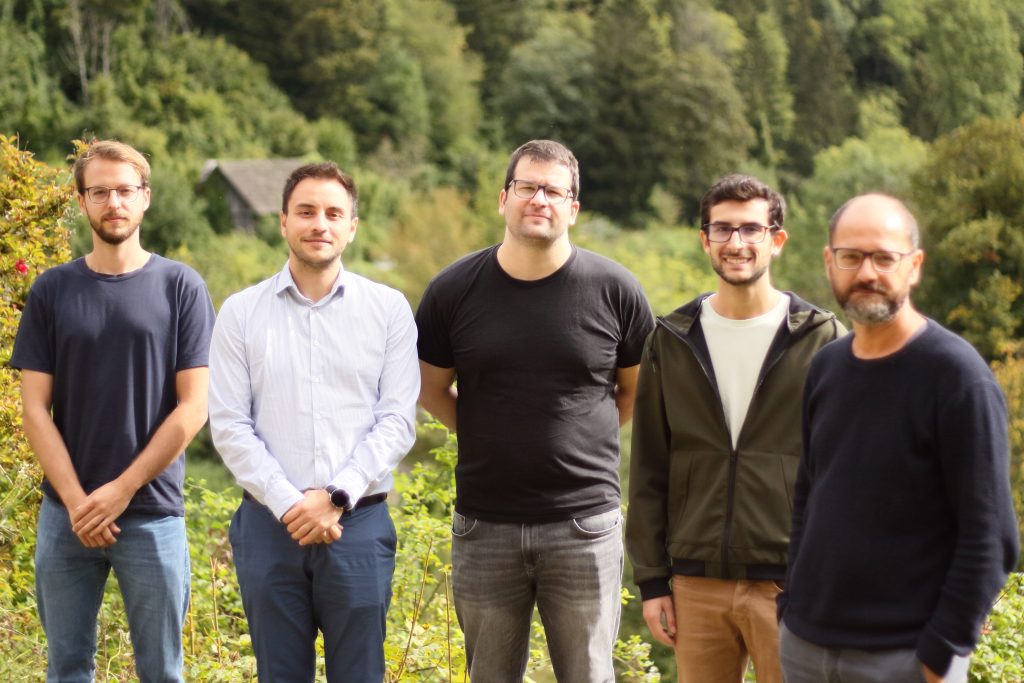
Publications
2024
Wang, Chunlei; Sombut, Panukorn; Puntscher, Lena; Jakub, Zdenek; Meier, Matthias; Pavelec, Jiri; Bliem, Roland; Schmid, Michael; Diebold, Ulrike; Franchini, Cesare; Parkinson, Gareth S.
CO‐Induced Dimer Decay Responsible for Gem‐Dicarbonyl Formation on a Model Single‐Atom Catalyst
Journal ArticleOpen AccessIn PressIn: Angewandte Chemie - International Edition, no. e202317347, 2024, ISSN: 1521-3773.
Abstract | Links | BibTeX | Tags: P02, P04, P07
@article{Wang2024,
title = {CO‐Induced Dimer Decay Responsible for Gem‐Dicarbonyl Formation on a Model Single‐Atom Catalyst},
author = {Chunlei Wang and Panukorn Sombut and Lena Puntscher and Zdenek Jakub and Matthias Meier and Jiri Pavelec and Roland Bliem and Michael Schmid and Ulrike Diebold and Cesare Franchini and Gareth S. Parkinson},
doi = {10.1002/anie.202317347},
issn = {1521-3773},
year = {2024},
date = {2024-01-31},
journal = {Angewandte Chemie - International Edition},
number = {e202317347},
publisher = {Wiley},
abstract = {The ability to coordinate multiple reactants at the same active site is important for the wide-spread applicability of single-atom catalysis. Model catalysts are ideal to investigate the link between active site geometry and reactant binding, because the structure of single-crystal surfaces can be precisely determined, the adsorbates imaged by scanning tunneling microscopy (STM), and direct comparisons made to density functional theory. In this study, we follow the evolution of Rh_{1} adatoms and minority Rh_{2} dimers on Fe_{3}O_{4}(001) during exposure to CO using time-lapse STM at room temperature. CO adsorption at Rh_{1} sites results exclusively in stable Rh_{1}CO monocarbonyls, because the Rh atom adapts its coordination to create a stable pseudo-square planar environment. Rh_{1}(CO)_{2} gem-dicarbonyl species are also observed, but these form exclusively through the breakup of Rh_{2} dimers via an unstable Rh_{2}(CO)_{3} intermediate. Overall, our results illustrate how minority species invisible to area-averaging spectra can play an important role in catalytic systems, and show that the decomposition of dimers or small clusters can be an avenue to produce reactive, metastable configurations in single-atom catalysis.},
keywords = {P02, P04, P07},
pubstate = {published},
tppubtype = {article}
}
2023
Puntscher, Lena; Sombut, Panukorn; Wang, Chunlei; Ulreich, Manuel; Pavelec, Jiri; Rafsanjani-Abbasi, Ali; Meier, Matthias; Lagin, Adam; Setvin, Martin; Diebold, Ulrike; Franchini, Cesare; Schmid, Michael; Parkinson, Gareth S.
A Multitechnique Study of C2H4 Adsorption on Fe3O4(001)
Journal ArticleOpen AccessIn: Journal of Physical Chemistry C, vol. 127, iss. 37, pp. 18378–18388, 2023.
Abstract | Links | BibTeX | Tags: P02, P04, P07
@article{Puntscher2023,
title = {A Multitechnique Study of C_{2}H_{4} Adsorption on Fe_{3}O_{4}(001)},
author = {Lena Puntscher and Panukorn Sombut and Chunlei Wang and Manuel Ulreich and Jiri Pavelec and Ali Rafsanjani-Abbasi and Matthias Meier and Adam Lagin and Martin Setvin and Ulrike Diebold and Cesare Franchini and Michael Schmid and Gareth S. Parkinson},
doi = {10.1021/acs.jpcc.3c03684},
year = {2023},
date = {2023-09-11},
urldate = {2023-09-11},
journal = {Journal of Physical Chemistry C},
volume = {127},
issue = {37},
pages = {18378--18388},
publisher = {American Chemical Society (ACS)},
abstract = {The adsorption/desorption of ethene (C_{2}H_{4}), also commonly known as ethylene, on Fe_{3}O_{4}(001) was studied under ultrahigh vacuum conditions using temperature-programmed desorption (TPD), scanning tunneling microscopy, X-ray photoelectron spectroscopy, and density functional theory (DFT)-based computations. To interpret the TPD data, we have employed a new analysis method based on equilibrium thermodynamics. C_{2}H_{4} adsorbs intact at all coverages and interacts most strongly with surface defects such as antiphase domain boundaries and Fe adatoms. On the regular surface, C_{2}H_{4} binds atop surface Fe sites up to a coverage of 2 molecules per (√2 × √2)R45° unit cell, with every second Fe occupied. A desorption energy of 0.36 eV is determined by analysis of the TPD spectra at this coverage, which is approximately 0.1–0.2 eV lower than the value calculated by DFT + U with van der Waals corrections. Additional molecules are accommodated in between the Fe rows. These are stabilized by attractive interactions with the molecules adsorbed at Fe sites. The total capacity of the surface for C_{2}H_{4} adsorption is found to be close to 4 molecules per (√2 × √2)R45° unit cell.},
keywords = {P02, P04, P07},
pubstate = {published},
tppubtype = {article}
}
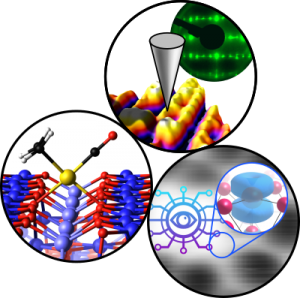
Kraushofer, Florian; Meier, Matthias; Jakub, Zdeněk; Hütner, Johanna; Balajka, Jan; Hulva, Jan; Schmid, Michael; Franchini, Cesare; Diebold, Ulrike; Parkinson, Gareth S.
Oxygen-Terminated (1 × 1) Reconstruction of Reduced Magnetite Fe3O4(111)
Journal ArticleOpen AccessIn: The Journal of Physical Chemistry Letters, vol. 14, no. 13, pp. 3258–3265, 2023.
Abstract | Links | BibTeX | Tags: P02, P04, P07
@article{Kraushofer2023,
title = {Oxygen-Terminated (1 × 1) Reconstruction of Reduced Magnetite Fe_{3}O_{4}(111)},
author = {Florian Kraushofer and Matthias Meier and Zdeněk Jakub and Johanna Hütner and Jan Balajka and Jan Hulva and Michael Schmid and Cesare Franchini and Ulrike Diebold and Gareth S. Parkinson},
doi = {10.1021/acs.jpclett.3c00281},
year = {2023},
date = {2023-03-28},
urldate = {2023-03-28},
journal = {The Journal of Physical Chemistry Letters},
volume = {14},
number = {13},
pages = {3258--3265},
publisher = {American Chemical Society (ACS)},
abstract = {The (111) facet of magnetite (Fe_{3}O_{4}) has been studied extensively by experimental and theoretical methods, but controversy remains regarding the structure of its low-energy surface terminations. Using density functional theory (DFT) computations, we demonstrate three reconstructions that are more favorable than the accepted Feoct2 termination under reducing conditions. All three structures change the coordination of iron in the kagome Feoct1 layer to be tetrahedral. With atomically resolved microscopy techniques, we show that the termination that coexists with the Fetet1 termination consists of tetrahedral iron capped by 3-fold coordinated oxygen atoms. This structure explains the inert nature of the reduced patches.},
keywords = {P02, P04, P07},
pubstate = {published},
tppubtype = {article}
}
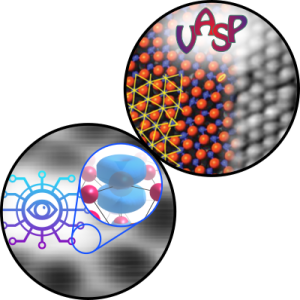
Verdi, Carla; Ranalli, Luigi; Franchini, Cesare; Kresse, Georg
Journal ArticleIn: Physical Review Materials, vol. 7, no. 3, pp. l030801, 2023.
Abstract | Links | BibTeX | Tags: P03, P07
@article{Verdi2023,
title = {Quantum paraelectricity and structural phase transitions in strontium titanate beyond density functional theory},
author = {Carla Verdi and Luigi Ranalli and Cesare Franchini and Georg Kresse},
doi = {10.1103/physrevmaterials.7.l030801},
year = {2023},
date = {2023-03-16},
journal = {Physical Review Materials},
volume = {7},
number = {3},
pages = {l030801},
publisher = {American Physical Society (APS)},
abstract = {We demonstrate an approach for calculating temperature-dependent quantum and anharmonic effects with beyond density-functional theory accuracy. By combining machine-learned potentials and the stochastic self-consistent harmonic approximation, we investigate the cubic to tetragonal transition in strontium titanate and show that the paraelectric phase is stabilized by anharmonic quantum fluctuations. We find that a quantitative understanding of the quantum paraelectric behavior requires a higher-level treatment of electronic correlation effects via the random phase approximation. This approach enables detailed studies of emergent properties in strongly anharmonic materials beyond density-functional theory.},
keywords = {P03, P07},
pubstate = {published},
tppubtype = {article}
}

Ranalli, Luigi; Verdi, Carla; Monacelli, Lorenzo; Kresse, Georg; Calandra, Matteo; Franchini, Cesare
Journal ArticleOpen AccessIn: Advanced Quantum Technology, vol. 6, iss. 4, 2023.
Abstract | Links | BibTeX | Tags: P03, P07
@article{Ranalli2023,
title = {Temperature-dependent anharmonic phonons in quantum paraelectric KTaO_{3} by first principles and machine-learned force fields},
author = {Luigi Ranalli and Carla Verdi and Lorenzo Monacelli and Georg Kresse and Matteo Calandra and Cesare Franchini},
doi = {10.1002/qute.202200131},
year = {2023},
date = {2023-02-22},
urldate = {2023-02-22},
journal = {Advanced Quantum Technology},
volume = {6},
issue = {4},
abstract = {Understanding collective phenomena in quantum materials from first principles is a promising route toward engineering materials properties and designing new functionalities. This work examines the quantum paraelectric state, an elusive state of matter characterized by the smooth saturation of the ferroelectric instability at low temperature due to quantum fluctuations associated with anharmonic phonon effects. The temperature-dependent evolution of the soft ferroelectric phonon mode in the quantum paraelectric KTaO_{3} in the range 0–300 K is modeled by combining density functional theory (DFT) calculations with the stochastic self-consistent harmonic approximation assisted by an on-the-fly machine-learned force field. The calculated data show that including anharmonic terms is essential to stabilize the spurious imaginary ferroelectric phonon predicted by DFT in the harmonic approximation, in agreement with experiments. Augmenting the DFT workflow with machine-learned force fields allows for efficient stochastic sampling of the configuration space using large supercells in a wide temperature range, inaccessible to conventional ab initio protocols. This work proposes a robust computational workflow capable of accounting for collective behaviors involving different degrees of freedom and occurring at large time/length scales, paving the way for precise modeling and control of quantum effects in materials.},
keywords = {P03, P07},
pubstate = {published},
tppubtype = {article}
}
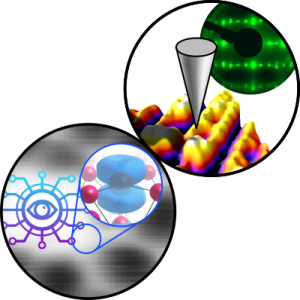
Corrias, Marco; Papa, Lorenzo; Sokolovíc, Igor; Birschitzky, Viktor; Gorfer, Alexander; Setvin, Martin; Schmid, Michael; Diebold, Ulrike; Reticcioli, Michele; Franchini, Cesare
Automated Real-Space Lattice Extraction for Atomic Force Microscopy Images
Journal ArticleOpen AccessIn: Machine Learning: Science and Technology, vol. 4, pp. 015015, 2023.
Abstract | Links | BibTeX | Tags: P02, P07
@article{Corrias2023,
title = {Automated Real-Space Lattice Extraction for Atomic Force Microscopy Images},
author = {Marco Corrias and Lorenzo Papa and Igor Sokolovíc and Viktor Birschitzky and Alexander Gorfer and Martin Setvin and Michael Schmid and Ulrike Diebold and Michele Reticcioli and Cesare Franchini},
doi = {10.1088/2632-2153/acb5e0},
year = {2023},
date = {2023-01-24},
urldate = {2023-01-24},
journal = {Machine Learning: Science and Technology},
volume = {4},
pages = {015015},
abstract = {Analyzing atomically resolved images is a time-consuming process requiring solid experience and substantial human intervention. In addition, the acquired images contain a large amount of information such as crystal structure, presence and distribution of defects, and formation of domains, which need to be resolved to understand a material's surface structure. Therefore, machine learning techniques have been applied in scanning probe and electron microscopies during the last years, aiming for automatized and efficient image analysis. This work introduces a free and open source tool (AiSurf: Automated Identification of Surface Images) developed to inspect atomically resolved images via Scale-Invariant Feature Transform (SIFT) and Clustering Algorithms (CA). AiSurf extracts primitive lattice vectors, unit cells, and structural distortions from the original image, with no pre-assumption on the lattice and minimal user intervention. The method is applied to various atomically resolved non-contact atomic force microscopy (AFM) images of selected surfaces with different levels of complexity: anatase TiO_{2}(101), oxygen deficient rutile TiO_{2}(110) with and without CO adsorbates, SrTiO_{3}(001) with Sr vacancies and graphene with C vacancies. The code delivers excellent results and is tested against atom misclassification and artifacts, thereby facilitating the interpretation of scanning probe microscopy images.},
keywords = {P02, P07},
pubstate = {published},
tppubtype = {article}
}
2022
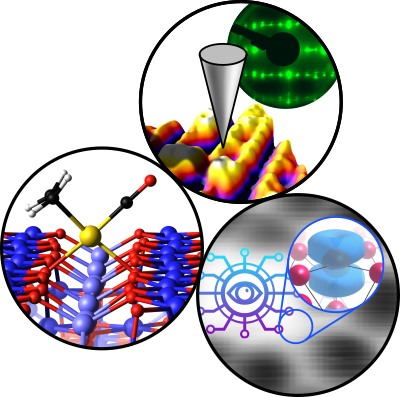
Wang, Zhichang; Reticcioli, Michele; Jakub, Zdenek; Sokolović, Igor; Meier, Matthias; Boatner, Lynn A; Schmid, Michael; Parkinson, Gareth S.; Diebold, Ulrike; Franchini, Cesare; Setvin, Martin
Surface chemistry on a polarizable surface: Coupling of CO with KTaO 3(001)
Journal ArticleOpen AccessIn: Science Advances, vol. 8, iss. 33, 2022.
Abstract | Links | BibTeX | Tags: P02, P04, P07
@article{Wang2022,
title = {Surface chemistry on a polarizable surface: Coupling of CO with KTaO _{3}(001)},
author = {Zhichang Wang and Michele Reticcioli and Zdenek Jakub and Igor Sokolović and Matthias Meier and Lynn A Boatner and Michael Schmid and Gareth S. Parkinson and Ulrike Diebold and Cesare Franchini and Martin Setvin},
url = {https://www.science.org/doi/10.1126/sciadv.abq1433},
doi = {10.1126/sciadv.abq1433},
year = {2022},
date = {2022-08-19},
urldate = {2022-08-19},
journal = {Science Advances},
volume = {8},
issue = {33},
publisher = {American Association for the Advancement of Science (AAAS)},
abstract = {Polarizable materials attract attention in catalysis because they have a free parameter for tuning chemical reactivity. Their surfaces entangle the dielectric polarization with surface polarity, excess charge, and orbital hybridization. How this affects individual adsorbed molecules is shown for the incipient ferroelectric perovskite KTaO_{3}. This intrinsically polar material cleaves along (001) into KO- and TaO_{2}-terminated surface domains. At TaO_{2} terraces, the polarity-compensating excess electrons form a two-dimensional electron gas and can also localize by coupling to ferroelectric distortions. TaO_{2} terraces host two distinct types of CO molecules, adsorbed at equivalent lattice sites but charged differently as seen in atomic force microscopy/scanning tunneling microscopy. Temperature-programmed desorption shows substantially stronger binding of the charged CO; in density functional theory calculations, the excess charge favors a bipolaronic configuration coupled to the CO. These results pinpoint how adsorption states couple to ferroelectric polarization.},
keywords = {P02, P04, P07},
pubstate = {published},
tppubtype = {article}
}
![Role of Polarons in Single-Atom Catalysts: Case Study of Me1[Au1,Pt1 and Rh1] on TiO2(110)](https://sfb-taco.at/wp-content/uploads/2023/02/P07_P04-300x300.png)
Sombut, Panukorn; Puntscher, Lena; Atzmüller, Marlene; Jakub, Zdenek; Reticcioli, Michele; Meier, Matthias; Parkinson, Gareth S.; Franchini, Cesare
Role of Polarons in Single-Atom Catalysts: Case Study of Me1[Au1,Pt1 and Rh1] on TiO2(110)
Journal ArticleOpen AccessIn: Topics in Catalysis, vol. 65, pp. 1620–1630, 2022.
Abstract | Links | BibTeX | Tags: P04, P07
@article{Sombut2022,
title = {Role of Polarons in Single-Atom Catalysts: Case Study of Me_{1}[Au_{1},Pt_{1} and Rh_{1}] on TiO_{2}(110)},
author = {Panukorn Sombut and Lena Puntscher and Marlene Atzmüller and Zdenek Jakub and Michele Reticcioli and Matthias Meier and Gareth S. Parkinson and Cesare Franchini},
doi = {10.1007/s11244-022-01651-0},
year = {2022},
date = {2022-07-25},
journal = {Topics in Catalysis},
volume = {65},
pages = {1620--1630},
abstract = {The local environment of metal-oxide supported single-atom catalysts plays a decisive role in the surface reactivity and related catalytic properties. The study of such systems is complicated by the presence of point defects on the surface, which are often associated with the localization of excess charge in the form of polarons. This can affect the stability, the electronic configuration, and the local geometry of the adsorbed adatoms. In this work, through the use of density functional theory and surface-sensitive experiments, we study the adsorption of Rh_{1}, Pt_{1}, and Au_{1} metals on the reduced TiO_{2}(110) surface, a prototypical polaronic material. A systematic analysis of the adsorption configurations and oxidation states of the adsorbed metals reveals different types of couplings between adsorbates and polarons. As confirmed by scanning tunneling microscopy measurements, the favored Pt_{1} and Au_{1} adsorption at oxygen vacancy sites is associated with a strong electronic charge transfer from polaronic states to adatom orbitals, which results in a reduction of the adsorbed metal. In contrast, the Rh_{1} adatoms interact weakly with the excess charge, which leaves the polarons largely unaffected. Our results show that an accurate understanding of the properties of single-atom catalysts on oxide surfaces requires a careful account of the interplay between adatoms, vacancy sites, and polarons.},
keywords = {P04, P07},
pubstate = {published},
tppubtype = {article}
}
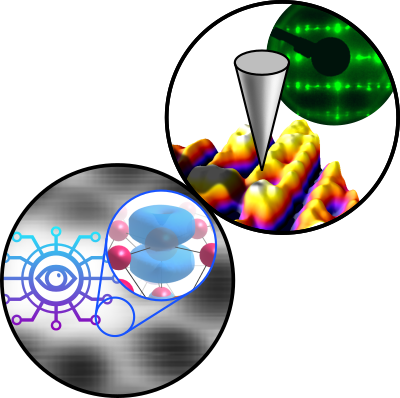
Reticcioli, Michele; Wang, Zhichang; Schmid, Michael; Wrana, Dominik; Boatner, Lynn A.; Diebold, Ulrike; Setvin, Martin; Franchini, Cesare
Competing electronic states emerging on polar surfaces
Journal ArticleOpen AccessIn: Nature Communications, vol. 13, no. 4311, 2022.
Abstract | Links | BibTeX | Tags: P02, P07
@article{Reticcioli2022,
title = {Competing electronic states emerging on polar surfaces},
author = {Michele Reticcioli and Zhichang Wang and Michael Schmid and Dominik Wrana and Lynn A. Boatner and Ulrike Diebold and Martin Setvin and Cesare Franchini},
url = {https://www.nature.com/articles/s41467-022-31953-6},
doi = {10.1038/s41467-022-31953-6},
year = {2022},
date = {2022-07-25},
urldate = {2022-07-25},
journal = {Nature Communications},
volume = {13},
number = {4311},
publisher = {Springer Science and Business Media LLC},
abstract = {Excess charge on polar surfaces of ionic compounds is commonly described by the two-dimensional electron gas (2DEG) model, a homogeneous distribution of charge, spatially-confined in a few atomic layers. Here, by combining scanning probe microscopy with density functional theory calculations, we show that excess charge on the polar TaO_{2} termination of KTaO_{3}(001) forms more complex electronic states with different degrees of spatial and electronic localization: charge density waves (CDW) coexist with strongly-localized electron polarons and bipolarons. These surface electronic reconstructions, originating from the combined action of electron-lattice interaction and electronic correlation, are energetically more favorable than the 2DEG solution. They exhibit distinct spectroscopy signals and impact on the surface properties, as manifested by a local suppression of ferroelectric distortions.},
keywords = {P02, P07},
pubstate = {published},
tppubtype = {article}
}

Birschitzky, Viktor C; Ellinger, Florian; Diebold, Ulrike; Reticcioli, Michele; Franchini, Cesare
Machine learning for exploring small polaron configurational space
Journal ArticleOpen AccessIn: npj Computational Materials, vol. 8, no. 125, 2022.
Abstract | Links | BibTeX | Tags: P02, P07
@article{Birschitzky2022,
title = {Machine learning for exploring small polaron configurational space},
author = {Viktor C Birschitzky and Florian Ellinger and Ulrike Diebold and Michele Reticcioli and Cesare Franchini},
url = {https://www.nature.com/articles/s41524-022-00805-8},
doi = {10.1038/s41524-022-00805-8},
year = {2022},
date = {2022-06-06},
urldate = {2022-06-06},
journal = {npj Computational Materials},
volume = {8},
number = {125},
publisher = {Springer Science and Business Media LLC},
abstract = {Polaron defects are ubiquitous in materials and play an important role in many processes involving carrier mobility, charge transfer and surface reactivity. Determining small polarons’ spatial distributions is essential to understand materials properties and functionalities. However, the required exploration of the configurational space is computationally demanding when using first principles methods. Here, we propose a machine-learning (ML) accelerated search that determines the ground state polaronic configuration. The ML model is trained on databases of polaron configurations generated by density functional theory (DFT) via molecular dynamics or random sampling. To establish a mapping between configurations and their stability, we designed descriptors modelling the interactions among polarons and charged point defects. We used the DFT+ML protocol to explore the polaron configurational space for two surface-systems, reduced rutile TiO_{2}(110) and Nb-doped SrTiO_{3}(001). The ML-aided search proposes additional polaronic configurations and can be utilized to determine optimal polaron distributions at any charge concentration.},
keywords = {P02, P07},
pubstate = {published},
tppubtype = {article}
}
